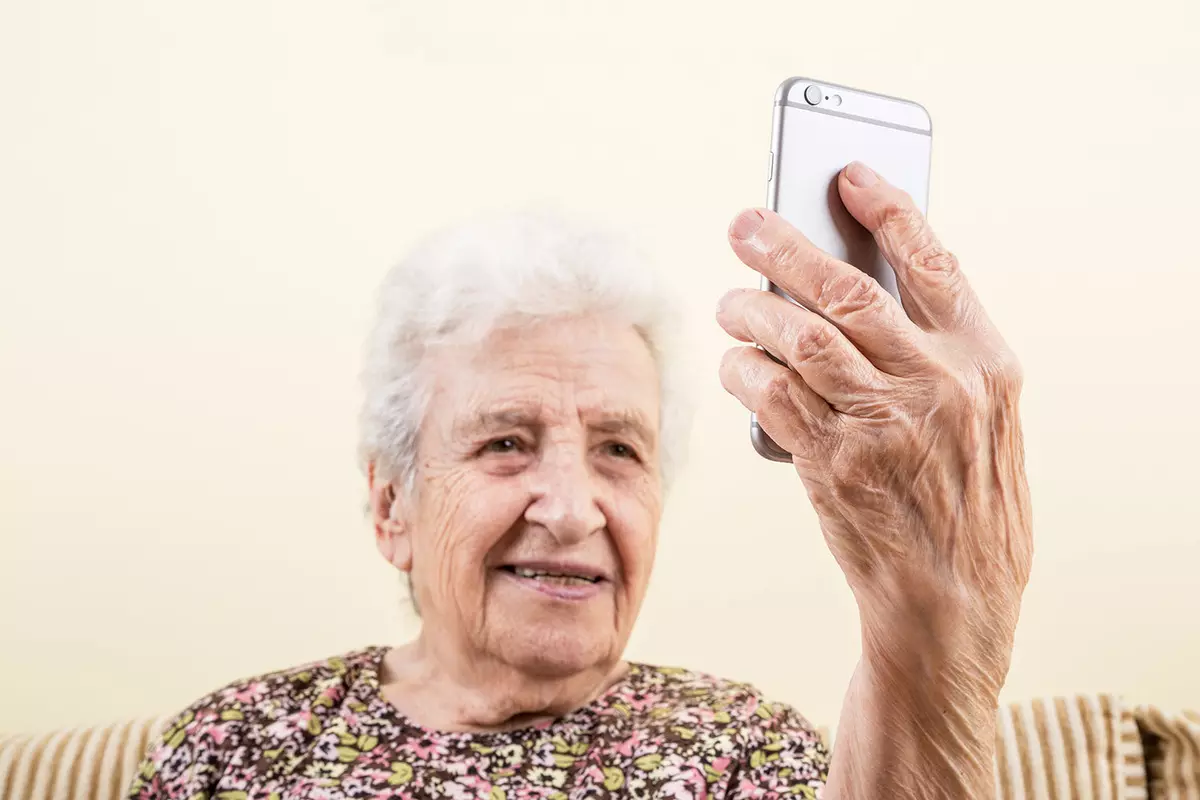Pandemic Cowid-19 How has ever forced the elderly to start looking for new medical solutions for themselves. According to reports, more and more older people connect to the Internet, since loneliness and insulation forced them to start using their devices wide. The survey conducted in the United States showed that during a pandemic, the use of telemedicine services with elderly people increased by 300%.
The acquisition of digital skills has become a compulsory requirement, but, in connection with blocking and concern about his health, most of them have lost their support in the field of technology that children, grandchildren and other, more competent in the computer region, family members. To learn how to use these technologies, they still have to be, as it contributes to the improvement of everyday life and the well-being of the elderly. And this is one of the gaps that technological companies in the field of health have to overcome.
Life on the side of the side
Until the last decade, the older generation was somewhat ignored by technological companies, since they were all aimed at young and technologically savvy people. Fortunately, this trend is changing for the better - not least due to the fact that, according to forecasts, the number of older people will double and will reach 1.5 billion people by 2050.

It took quite a lot of time, but today there are many smartphones designed specifically for the needs of the elderly. They have large screens, large, easy-to-read fonts and simpler user interfaces. Such phones are not necessarily done too smart, but at least they exist. Experts say that the delay was caused by an insufficient understanding of the technological needs of the elderly, the lack of innovation and reluctance of investors invested in such technologies. Similar problems are preserved in health technologies.
New technologies and not immediately seen difficulties
People who are now for 70 were about fifty years, when the first iPhone came out, so we will not forget that they are already accustomed to using individual "smart" devices. However, the extremely rapid development of digital technologies, characteristic of our daily life, can make even more experienced person feel that this train has already drove away from the station. Plus, most people aged 60+ are not at all falling into the category of people who work out in technology.
But the problem is also that the whole health system does not have time for the development of new technologies and even if the elderly will start "on the entire coil" to use digital medical devices, the data obtained by such devices is simply no one to take, they do not need anyone. The reason is, the infrastructure and work processes of health care even in developing countries still remain the same. Here we are not talking about individual innovative medical centers, but about health care for the entire population, who, alas, are forced to be content with the fact that another decades have been used.
Although today, fortunately, there are more and more inventions intended for the elderly, these solutions are either too expensive or require someone to explain how they actually work - or both. At the global exhibitions CES in recent years, several systems and devices specifically designed for the elderly were presented. From the system for rehabilitation conducted in a game form, to a guardian robot, from a drop detector to a "smart" solution for remote care based on artificial intelligence technology. However, these devices more relate to the category of elite, and the elderly middle-class people are unlikely to pay for the device.
The last such exhibition CES 2021, which was carried out in virtual form, showed that the technological community pays more attention to how to facilitate the lives of elderly people. Therefore, such innovations, like telemedicine, fitness and health programs, as well as platforms and solutions for monitoring, have become somewhat more accessible for the price and now they will be able to use a wider range of people.
Recently, sectoral organizations in developed countries, such as the American Association of Pensioners, focusing on issues affecting people over fifty years old, began to produce recommendations intended for doctors and instructions on how to help pensioners when contacting telemedicine services and explain which wearable Devices will be useful to them.
There are other problems associated with the old age of potential users who are very often developers, and many of them young people do not think. Interface developers sometimes create elements that are difficult to master the old men, whose hands are amazed by arthritis, and the vision is such that they cannot always distinguish individual parts, such as sites where the text is displayed in gray colors on a light blue background. There are many similar problems, and these seemingly little things impede emergent people to use many useful technologies.

3 main barriers that interfere with the elderly to take part in the digital revolution in health care
- Only a few technological innovations are intended for the elderly. If they are intended, then often with a biased attitude towards the peculiarities and the possibilities of pensioners.
- Availability. If even such a technique is intended for old people, it is often not available at the price.
- Lack of support to start using such technologies to use these technologies and are available at the price for the elderly, then very often they do not receive support to start them really use them.
Technological companies over the past few years have begun to develop specialized devices for the elderly, but this is only a small part of what they do for young people. The pandemic became a factor that accelerated the development of technological solutions by the elderly, they are also increasingly using these devices, and companies target more and more products on them. However, this process has two sides: when companies are trying to develop devices for the elderly, they often find out their actions on prejudices about people in these age groups. Some of these prejudices can be completely irrelevant, and in some cases - even straight offensive. Companies suggest that people at a certain age should or should not do, but from a scientific point of view such data simply does not exist. The most useful devices are not always gadgets that suggest any special features. On the contrary, it is often a technology that, for example, helps older people easily maintain contact with loved ones.
AvailabilityIf even technology is good for the elderly, it is often unavailable at the price. Smartphones, smart watches, wearable devices that help assistive technological solutions and other medical facilities available on the market often have a very high price. The price eliminates most of society - including the elderly. And as we know from research, for the elderly, the choice of a device or platform is primarily a value-oriented solution. They make decisions in this way and when it comes to gadgets.
Lack of technology support for configuring devicesFrom the developer and manufacturer, the processes and algorithms are likely to seem obvious, and they are just as simple for understanding. But will the programmer be able to talk about this with a person essentially older in age?
Instructions should be clear and unmistakable, approximately how IKEA does them. But remember how many times we all stood over such instructions, feeling helpless. And this when assembling a simple, as it seemed, the cabinet. Now imagine the same feeling, but with much more complex questions, example, setting up a new user account for a new device, and then binding it to e-mail or a wore device.
In order for developers and the elderly users to find each other, they must start talking in the same language. As the number of old men grow, and they need more care, the gap in the market increases. Therefore, doctors and developers are also interested in the development of digital technology in the field of health, specially designed for older people.
According to CNBC, Medical Futurist, Elliq, Aarp, Essence SmartCare.
